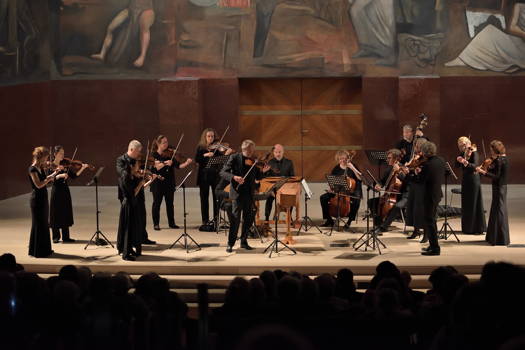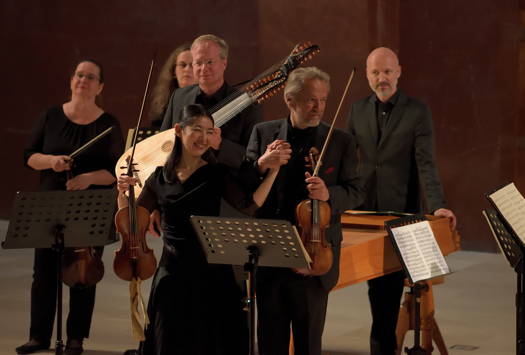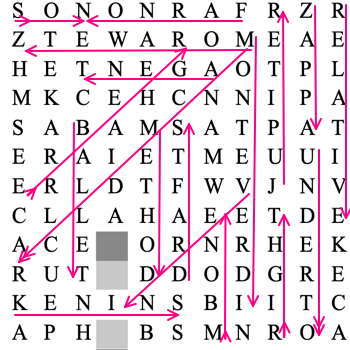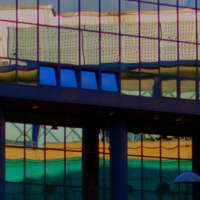- Giuseppe di Stefano
- Boris Pergamenschikow
- Federal Republic of Germany
- Sally Beamish
- Rued Langgaard
- Mendelssohn: Elijah
- Denise Shepherd
- Marina Viktorovna Kondratyeva
The Best Buy
GIUSEPPE PENNISI reports on
the last 2018-19 subscription concert of
Rome's Istituzione Universitaria dei Concerti,
given by Giuliano Carmagnola and Concerto Köln
On 11 May 2019, I went to the last subscription concert of the 2018-2019 series of the Istituzione Universitaria dei Concerti (IUC) in Rome, an offspring of Rome's University La Sapienza; for a summary outline see A Timeless Composition, 11 April 2019. The season ends in May because the auditorium is within the university campus, and, starting in June, professors and students are very busy with examinations and discussions of dissertations. The concert started almost half an hour after the scheduled time, 5:30pm. Why? In addition to subscribers, IUC caters for listeners who buy tickets at the box office at the last moment. The queues were so long that the concert had to be delayed to accommodate the audience. Yet not all of them could get tickets and enter the concert hall. When the concert began, the auditorium was filled to the hilt in all categories of seats. There were many youngsters and even children from the age of about six onwards. The program was attractive; the musicians internationally known. The prices are about half of those in the concert series of the National Santa Cecilia Academy; in addition, generous discounts are provided to students, university professors - a low income group in Italy as everywhere - and their families.
The programs included seven baroque concerts; of which four - Vivaldi's The Four Seasons cycle - are very famous. The musicians were the Concerto Köln, a top-notch self-governed German ensemble, with Giuliano Carmagnola as violin soloist. Both Concerto Köln and Giuliano Carmagnola are often on international tours, and have made many recordings which have received several awards. Concerto Köln plays on period instruments and is 'cultural ambassador' of the European Union; on 11 May, the Japanese violinist Mayumi Hirasaki took the lead of the fourteen soloists. Carmagnola plays on a Stradivari 'Baillot' owned by the Bologna Savings and Loans Bank. Due to the late start, Concerto Köln and Carmagnola decided to skip the programmed twenty minute intermission. Thus, they performed for almost two hours without a moment of pause. At the end, applause, accolades and ovations were such that they encored the third movement - 'the summer hunt' - of Vivaldi's Four Seasons. This is just the chronicle of a fulfilling evening.

Giuliano Carmagnola (front, centre) and Concerto Köln on 11 May 2019. Photo © 2019 Claudio Rampini
Before Vivaldi's popular masterpiece, the concert included three pieces the audience was not familiar with. The evening started with the Concerto in D minor, Op 2 No 1, by Evaristo Felice Dall'Abaco, a Vivaldi contemporary, who worked for several years as a Konzermeister at the Court of Bavaria. It is a comparatively short piece in four almost tiny movements, in which Concerto Köln warmed up for the rest of the evening; two of the four movements are brilliant allegri. The second piece was Charles Avison's Concerto in D major, No 6. In the United Kingdom, Avison is known mostly because he disseminated Italian music, especially Domenico Scarlatti, across the Channel. Indeed, his Concerto in D is part of the cycle Seven Concertos in Seven Parts after Scarlatti. Especially in the initial largo, the listener could feel melodies from Scarlatti's sonatas.
For the third piece - J S Bach's Concerto in D minor for two violins, strings and continuo, BWV 1043 - Carmignola joined the Concerto Köln. He and Mayumi Hirasaki exploded in a joyous confrontation with the orchestra: the first movement is a vivace, the third an allegro and the second and middle movement a largo ma non tanto. The thrills of the two violins were enthralling.

Mayumi Hirasaki and Giuliano Carmagnola, with members of Concerto Köln, sharing the applause for their performance of J S Bach's Double Concerto. Photo © 2019 Claudio Rampini
Vivaldi's Four Seasons needs no description. This rendering has a special tilt: it reminded all of us that Vivaldi was a virtuoso violinist before becoming a well-known composer, music theorist, a maestro di cappella and a very passionate and appreciated educator. Mayumi Hirasaki and Giuliano Carmagnola, as well as the rest of the ensemble, were superb ... as recognized by the audience.
In conclusion: if you happen to be in Rome, look out for IUC: it's the best buy in town.
Copyright © 13 May 2019
Giuseppe Pennisi,
Rome, Italy





